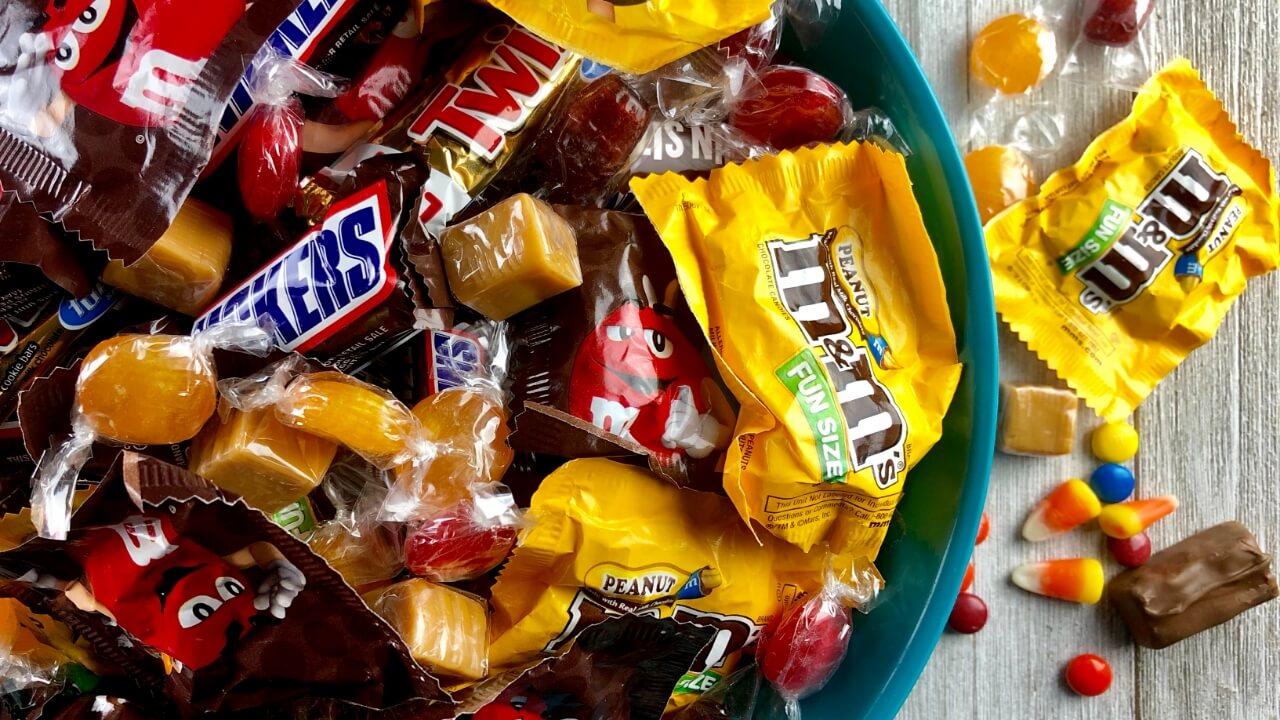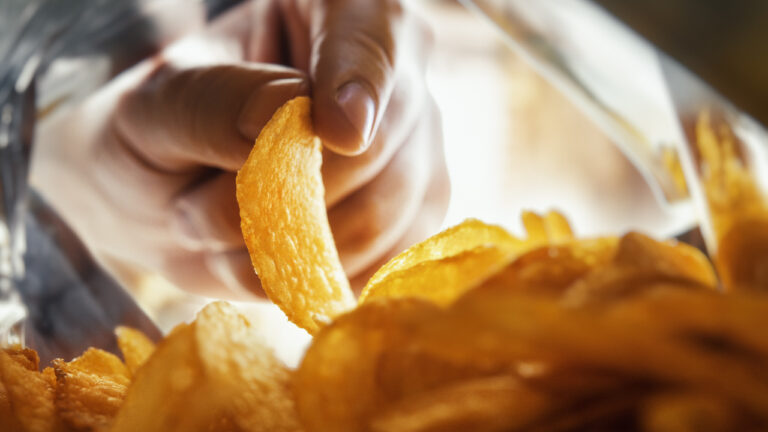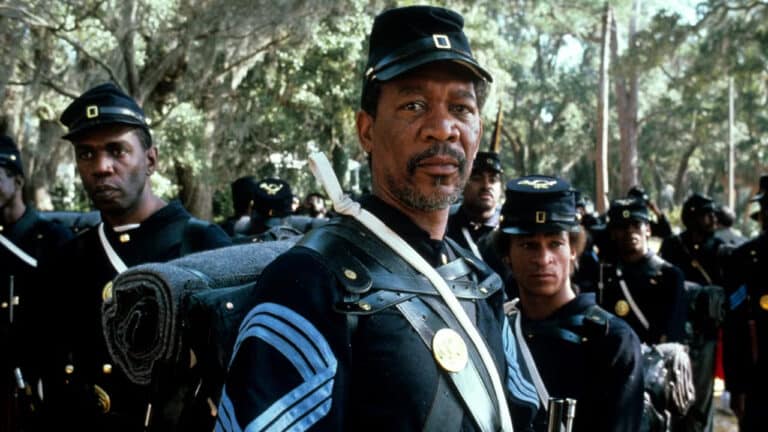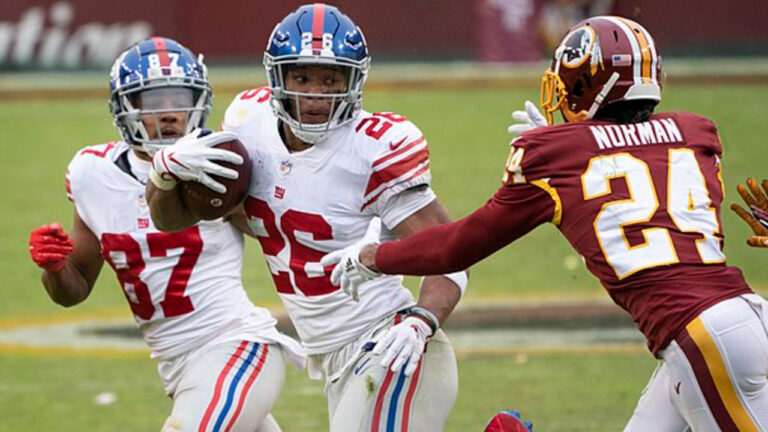Here Are the Most Beloved and Memorable Snacks Throughout History

Are you a Moon Pie man? A Whatchamacallit woman? Something in between? After all, snacks exist on a spectrum.
Snacks are like movies in that two people are unlikely to have the same favorite. Plus, like movies, certain snacks are disproportionately loved, launching them into a stratosphere where only timeless munchies reside. Whether it’s due to a nostalgic connection to childhood, a secret ingredient that hits your taste buds just right, or some other addictive quality that keeps you coming back for more, certain snacks just have that “it factor.”
The most enduring snacks make it through wars, political revolutions, economic crashes, and technological transformations. What’s delicious is delicious, and the most beloved snacks never fall out of favor — some do, but even then, history remembers them fondly. The snacks that made this list have stood the test of time, occupied a prominent place in the culture, and are just as popular today as ever.
1. Goldfish

Goldfish has several pros going for it. For one, edible animals are always fun. Second, Goldfish come in various flavors, from Flavor Blasted Xtra Cheddar to Sour Cream and Onion and even pretzel form.
Third, they have a decades-long track record of being a pantry staple, even picking up sales momentum in recent years. Americans today eat more than 150 billion Goldfish annually, doubling consumption from the mid-2000s.
They’re a bar snack, they’re in your kid’s lunchbox, and they’re arguably the greatest American snack of all.
2. Reese’s Peanut Butter Cups

The greatest tragedy of peanut allergies isn’t depriving someone of a peanut butter and jelly sandwich. The Reese’s Peanut Butter Cup is almost worth going into anaphylactic shock for, at least once.
Though Harry Burnett Reese started his chocolate operation years prior, he began pairing chocolate with peanut butter in 1928. Originally known as “penny cups” because of the one-penny price point, Reese’s Peanut Butter Cup has not lost a single step in nearly 100 years. The penny cups were the fuel that propelled Reese from a Hershey’s employee into full-blown entrepreneurship.
Are you surprised? If so, you haven’t had a refrigerated peanut butter cup after a breakup.
3. Cape Cod Potato Chips

The variety of potato chips in today’s grocery stores would make your great-grandfather’s head spin. No longer are Utz and Frito Lay the only options, and savvy connoisseurs of potato chips gravitate to Cape Cod faster than a Kennedy on spring break.
You could argue which is the best brand of kettle-style chip. Yet, it’s difficult to argue that any single brand is more synonymous with the hearty, satisfying crunch of a kettle chip than Cape Cod is.
The company began in Hyannis Port, famously the stomping ground of the Kennedy clan. When your target demographic descends from American royalty, you better make a mean chip — Cape Cod does just that.
4. Cheez-Its

When a snack warrants its own entry on the Smithsonian website, you know it’s iconic (and delicious). More than 400 million boxes of (highly addictive) Cheez-Its have sold in a single calendar year. The Drug Enforcement Agency should look into that.
The Cheez-It was born in 1921 in Dayton, Ohio. Green & Green cracker company initially called the Cheez-It the “baked rarebit,” a name with far less marketing potential. The addictive square crackers endured the Great Depression, changing hands numerous times before Keebler purchased the brand in 1996.
The only question is which flavor to pick up on the next grocery run. I’m going with White Cheddar every time.
5. Doritos

A Dorito is much more than a Tortilla chip. It’s a tortilla chip with a dusty flavoring of unknown origin sprinkled all over it. The dust makes all the difference, as the ingredients in Dorito dust is scientifically proven to make us crave more. Some have referred to our body’s response to digesting Doritos as “morphine-like,” meaning Dorito is essentially a drug.
Like many iconic American snacks, the Dorito has been repurposed in several ways, notably as a taco shell. Predictably, the result of crafting a Cool Ranch Dorito in a taco-shell shape and stuffing it with ground beef, sour cream, and veggies is predictably sublime.
You can thank Frito-Lay’s Casa de Fritos restaurant in Anaheim, California, for the birth of this iconic American snack, which resides in the elite tier of chips.
6. Snickers

“Snickers” doesn’t just describe what you do after you steal the last caramel-filled chocolate bar from the family’s stash. The mention of the name also kicks your salivary glands into high-gear, going from zero to sixty faster than a Tesla.
The first Snickers bar entered the world in 1930 in Chicago. The combination of chocolate, nougat, caramel, and peanut butter has proven timeless, with Mars producing 15 million of the handheld dopamine vessels every day. Through the sheer deliciousness of the product and a series of brilliant marketing campaigns, Snickers remains as relevant in American popular culture (and stomachs) as ever.
7. Pepperidge Farm Cookies

Pepperidge Farm is so synonymous with its cookies that you might forget the brand makes Goldfish, bread, pastries, and crackers. It’s the elevated yet affordable cookies in their multi-tiered plastic trays and paper housing that get all the shine, as they should.
So many delicious strains of cookie come out of the Farm (a real place in Connecticut where the brand originates) that it’s impossible to pick one. Milano might be the most recognizable.
That said, Tahoe (white chocolate with macadamia nut) and Sausalito (milk chocolate with macadamia nut) bring far more flavor to your palette. You can’t go wrong if it’s a cookie with the Pepperidge Farm logo on the bag.
8. Oreos

In 2024, viral “news” stories about a potential ban on certain snack foods, including Oreos, had Americans stocking up on Double Stuffed’s.
Take my home. Heck, take my firstborn. Just keep your grubby hands off my Oreos.
Nabisco introduced the Oreo in 1912, and the cookies have bore the same logo since 1952. It is the best-selling cookie of the 21st century, but would you argue that Oreo is the best-tasting cookie of the 21st century? Add milk, and you might have an argument, but we say otherwise (more on that in a second).
9. Girl Scout Cookies

While Fortune 500 food manufacturers have not-so-subtly peddled cheap imitations of the Thin Mint and Samoa, there’s something special about the Girl Scout Cookie. Not only do you have the opportunity to support the Girl Scout Cookie Program (established in 1917), but you get to eat your way into oblivion while doing it.
Inflation has done a number on the Girl Scout Cookie, as it has virtually everything (except the Costco hot dog). Yet, Americans remain loyal to the Troop. Peanut butter, coconut, and mint-flavored treats have proven to be a $1 billion business for the Scouts. Forget a life of crime, start selling Tagalongs!
10. M&M’s

America’s favorite talking candy, M&M’s are as reliable a sweet treat as there is. Whether you prefer the oversized Peanut M&Ms, the peanut butter-filled poppers, or the chocolate iteration, there’s an M&M for virtually everyone.
Featured in films like Tommy Boy (“I think you’ll be okay here, they have a thin candy shell.”), M&Ms are an unfathomably delicious pop-culture sensation. Everyone knows what you’re talking about when you say “M&M,” unless they think you’re talking about the rapper. Even America’s most-known rap star, Eminem, has collaborated with M&Ms.
They’re an unfathomably delicious pop-culture sensation.
11. Fig Newtons

Are Fig Newtons going to win any snack-centric popularity contests? No chance. However, few snacks are as filling as a Fig Newton, and the snack was a trailblazer that revolutionized how Americans snack.
Florida-based inventor James Henry Mitchell concocted a machine that could create a hollow shell to be filled with a delicious semi-liquid interior (in this case, fig preserve). For this alone the Fig Newton deserves its flowers. Plus, underneath the thick exterior of any Fig Newton hater is someone wishing you’d offer them a Fig Newton.
12. Beef Jerky

Long the go-to gas station snack for beltline-watching travelers, beef jerky comes in many flavors — almost all of which are pretty expensive. The comparatively high price point tells you that beef jerky offers real protein amidst a sea of corn syrup-infused alternatives.
Seasoned, marinated, and dried beef strips will never not be American, no matter what the vegans tell you. Whether you’re snapping into a Slim Jim, yelling “Oh Boy!” between each bite of Oberto, or munching on some grass-fed, sea-salted niche brand (seriously, good for you), you’re dining on an iconic American porta-snack.
13. Kit Kat

Does the taste of a Kit Kat bar measure up to the decadence of a Reese’s Peanut Butter Cup? Even Kit Kats Anonymous members would probably admit: Not quite. We’ll ask you this, though: Can you snap a Reese’s Peanut Butter Cup in half with the ease of Hulk Hogan snapping a chopstick?
We may concede that Kit Kat doesn’t have an elite taste, but it’s a top-shelf chocolate-consuming experience. If you have the gall to disagree, you can just gimme a break. The Kit Kat is actually an English creation originally known as Rowntree’s Chocolate Crisp. It’s ours now, King George, and we’re calling it the Kit Kat.
14. Little Debbie Oatmeal Creme Pies

Little Debbie’s Oatmeal Creme Pies nearly fall apart in your hand. They’re unglamorous, sold in a frill-free white box and clear cellophane packaging. Yet, despite the bare-bones marketing, you’ll still find the pies in your local grocery store. The original debuted in the middle of the Great Depression (1935) when America needed a sweet, creme-filled, fresh-out-the-oven-soft treat as badly as ever.
The real-life Little Debbie is Debbie McKee-Fowler, who serves as the executive vice president of McKee Foods (the originator of the Little Debbie brand). If you’ve noticed that the quality of Oatmeal Creme Pies is as strong as ever, consider that Little Debbie takes her reputation seriously.
15. Ruffles

Ruffles have ridges, but they also have a special place in the hearts of American snack enthusiasts from coast to coast.
Technically, it’s not a Ruffle. When inventor Bernhardt Stahmer applied for the patent on what would become the Ruffle, he described the chips as “sliced, corrugated potato products.” Somehow, Sliced, Corrugated Potato Product doesn’t have the same ring as Cheddar & Sour Cream Ruffles. Stahmer even claimed that the very act of slicing Ruffles in their unique texture made the chips taste cheesy, but adding a heaping of cheddar cheese dust on top didn’t hurt.
16. Gummy Bears

Hans Riegel of Germany (of Haribo fame) gets credit for the gummy bear, sensing that the population of 1920s Germany had tired of the hard candies he had sold for years. Instead, he infused fruit flavors in a gelatin base shaped like dancing bears, and a star was born.
While the gummy bear is distinct, it is a continuation of a tradition of cooking sugar along with fruit to delicious effect. Instead of jam or jelly, Riegel created a kid-friendly, poppable candy. Originally called Dancing Bears, Haribo renamed them Goldbears in 1960. While Life Savers and many other brands make serviceable gummy candies, candy purists know Haribo is beyond imitation.
17. Tortilla Chips

Though a particular dust-coated tortilla chip appeared earlier in this list, the plain-old tortilla chip deserves its credit (and by credit, we mean guacamole and salsa).
Tortilla chips crossed the border around 1900 when they flew out of the kitchens of Southern California restaurants with increasing frequency. Many restaurateurs were merely creatively repurposing their unused tortilla dough, not realizing they were creating a future staple of Super Bowl parties, pool parties, World Cup parties, and… well, parties in general.
To think that nachos, chips and guac, and other tortilla-chip-dependent delicacies happened by accident…
18. Pringles

Pringles have lost a bit of luster as the chip marketplace has become increasingly diverse. Yet, they undoubtedly hold a unique spot in the history of American munching.
Anything but an organic creation, Procter & Gamble concocted the stackable chip in 1956 after hearing frequent complaints about bags filled with broken chips. Chemist Fredric J. Baur designed the chip, which took years to hit the market due to poor taste in its earliest iterations.
If there was ever a lovable Frankenstein within American snack culture, it’s the Pringle.
19. Snyder’s Honey Mustard & Onion Pretzel Pieces

Like your favorite band, Snyder’s Pretzel Pieces are a criminally underrated snack. More specifically, Snyder’s Honey Mustard & Onion Pretzel Pieces are a First-Ballot Hall of Fame snack.
Snyder’s brands itself as “America’s Pretzel Bakery Since 1909.” While it has created many delicious pretzel-centric offerings since 1909 (including braids, rounds, sandwiches, jumbos, and more), the infusion of honey mustard and onion in the vessel of the pretzel is undoubtedly Snyder’s greatest contribution to food culture.
20. Twix

Give an American a Twix, Snickers, Butterfinger, or Reese’s Cup, and watch them be totally quiet for the next five minutes. Either of these delectable chocolate products will do the trick, but we are in the business of ranking.
While the chocolate bar with a cookie base and a caramel drizzle is undoubtedly delicious, it just does not pack the cultural relevance that its direct competitors (namely Reese’s and Snickers) do. Still, you’ll find many Americans who live that #TwixLife, embracing spinoff products like Twix Cookie Dough as they swear to their mothers that cookies are far superior to nougat.
21. Chex Mix

When we say Chex Mix, you probably think of the branded snack sold at virtually every corner store in the United States. Yet, what makes Chex Mix a truly American snack is its democratized element, as it’s a snack you can make and customize in your own kitchen.
Some people prefer M&Ms in their Chex Mix, while others drop a handful of Goldfish in to go swimming among the pretzels and Chex cereal. Our family tosses Worcestershire sauce liberally to add a kick. Indeed, Americans have been mixing up their Chex Mix for many decades.
22. Butterfinger

Some use “butterfinger” as a derogatory term for someone who struggles to catch an object. Yet, in American snack lore, there is nothing but love for Butterfinger.
The Butterfinger candy bar first emerged in Chicago in 1923, when the Curtiss Candy Company unleashed a peanut butter-centered chocolate bar that would proceed to give dentists nightmares for a century-plus to come.
In an endeavor that should have been named Operation Butterfinger Drop, the marketing team at Curtiss decided to drop Butterfingers from a plane over New York City, attaching candy bar-sized parachutes to each. The rest is molar-wrecking history.
23. Lays

In basketball parlance, picking Lays as your favorite snack would be a Lays-up. Some might even call it Lays-y.
The truth is that Americans have been brainwashed into buying Lays chips. They are the Dallas Cowboys, the Avengers films, the Chevrolet Malibu. Lays are recognizable, very popular, but ultimately an inferior product to many of the brands you’re too cowardly to buy instead.
Their thin texture, greasy residue, and odd aftertaste are beneath you, yet you’ll continue to purchase Lays because that’s the American programming many of us have been hardwired with.
24. Dippin’ Dots

How many other ice creams came from the mind of a microbiologist? In 1988, Curt Jones resolved himself to develop the ice cream of the future. Using cryogenic technology (shout out to Walt Disney), Jones developed a pellet-shaped alternative to Ben & Jerry’s. Finally, Americans could enjoy freeze-dried ice cream befitting of an astronaut.
The original Dippin’ Dots store closed after only nine months in business. However, a re-orientation towards sporting events and amusement parks proved profitable, and no trip to the ballpark is complete without a mini helmet full of ice-cold ice cream balls.





